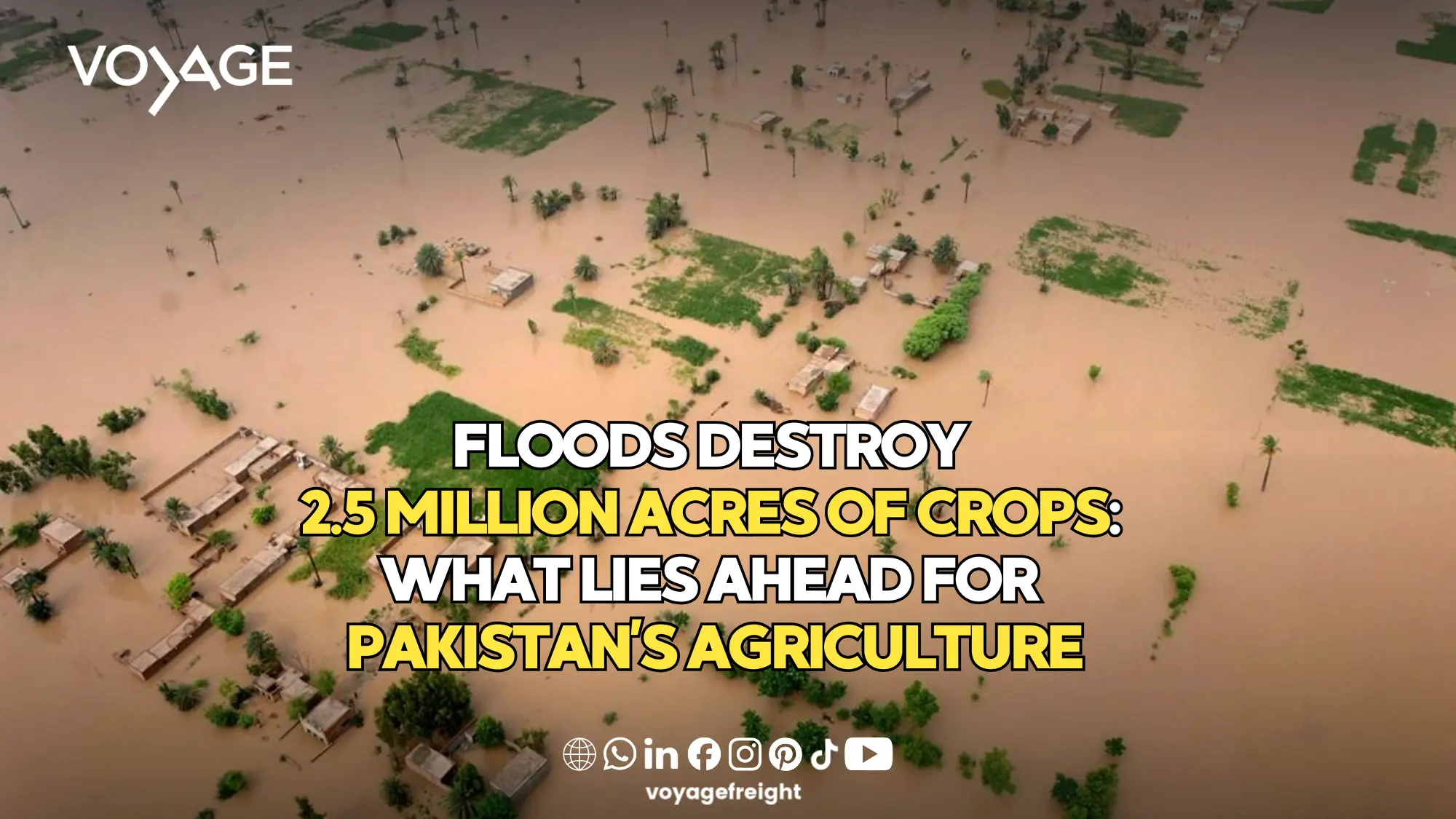
Floods Destroy 2.5 Million Acres of Crops: What Lies Ahead for Pakistan’s Agriculture
Pakistan’s agriculture sector, the backbone of its economy, is facing a severe challenge. Recent floods have devastated 2.5 million acres of crops, equal to almost 7.7% of the country’s total cultivated land. This large-scale crop damage has raised concerns about food security, export potential, and the long-term future of agriculture in Pakistan.
The Scale of Crop Damage
Floods have caused widespread destruction across major agricultural provinces. The most affected crops include:
- Rice: 998,000 acres destroyed
- Fodder: 583,000 acres
- Sugarcane: 274,000 acres
- Cotton: 162,000 acres
- Sesame: 101,000 acres
- Vegetables: 51,000 acres
- Orchards: 71,000 acres
- Maize: 242 acres
Other regions have reported damage to crops such as onions, chilies, and date palms, resulting in billions of rupees in agricultural losses.
Impact on Pakistan’s Food Security and Economy
The impact of these floods goes far beyond immediate crop loss. They directly threaten:
- Food Security in Pakistan: With rice, wheat, and fodder fields under water, the supply of staple foods and animal feed is at risk.
- Agricultural Exports: Pakistan’s ability to compete in global markets for rice, cotton, and other commodities is under severe pressure.
- Price Stability: Reduced availability of essential crops could trigger food inflation and market volatility.
- Farmer Livelihoods: Millions of farmers and agricultural laborers depend on seasonal harvests for survival.
This disruption highlights how climate-driven disasters can destabilize both rural communities and the national economy.
The Future of Agriculture in Pakistan
The floods are not just a natural disaster—they are a wake-up call. The future of Pakistan’s agriculture will depend on urgent reforms and resilience strategies, including:
- Flood-Resistant Farming: Promoting crop varieties that can withstand extreme weather conditions.
- Improved Water Management: Modern irrigation, drainage systems, and embankments to protect farmland.
- Crop Diversification: Reducing reliance on a few cash crops by encouraging climate-resilient alternatives.
- Technology in Agriculture: Using satellite monitoring, digital agriculture platforms, and precision farming for early disaster detection and smarter resource use.
- Farmer Support Programs: Insurance, subsidies, and training to help farming communities recover faster.
- Sustainable Practices: Climate-smart agriculture to adapt to unpredictable weather patterns.
Conclusion
The destruction of 2.5 million acres of farmland is not only a setback for today’s harvests but also a warning for the future of agriculture in Pakistan. Without swift action, recurring floods and climate shocks could continue to threaten food security, farmer livelihoods, and export competitiveness.
To secure its agricultural future, Pakistan must embrace resilience, technology, and sustainability. Only by transforming its agricultural systems can the country protect its farmlands and ensure food security for generations to come.
Source: Business Recorder

